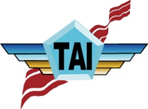Information
-
Audit Title
-
Document No.
-
Client / Site
-
Conducted on
-
Prepared by
-
Location
-
Personnel
General Facilities Photos
Previous inspection
-
Has the last inspection been reviewed?
-
All prior corrective actions from previous incidents or audits have been completed.
Record Keeping 1904
-
Is the facility properly reporting incidents, including near miss, property damage, first aid, and all a recordable incidents within the reporting guidelines and time frame?
-
.33 - Have incident reports, injury/illness logs, and all recordable incidents within the reporting guidelines and time frame?
-
Is the current required OSHA Job Safety and Health Protection poster displayed in a prominent location accessible to employees?
-
Safety committee minutes are maintained and available for review?
-
Job hazard analysis has been completed for all jobs?
-
Additional Comments
Walking - Working Surfaces 1910.22 (Subpart D)
-
(a)1 - Evacuation plan displayed and understood by all employees?
-
(a)2 - Where wet/oily process are used is drainage maintained, false floors or mats provided where practical?
-
(a)3 - Are all floors, working spaces and passageways kept free from sharp edges, splinters, holes or other hazards?
-
Is signage available to warn of hazards within the working environment or within the walking areas.
-
Additional Comments
Floor and Wall Openings 1910.23
-
(a)1 - Is every stairway floor opening guarded by a standard rail?
-
(c)1 - Is every open - sided floor or platform that is 4 feet or more adjacent floor or ground level, guarded by a standard railing on all opesides? (excluding loading docks w/proper visual control)
-
No openings are present that present a slip, trip, or fall hazard from either a platform, floor level, or height of elevation.
-
(e)1 - Is all railing 42 inches high with a smooth top railing that does not overhang causing a projection hazard.
-
Additional Comments
Fixed Industrial Stairs 1910.24
-
(b) - Are stairs fixed at all points where access to elevation is daily or regular?
-
(d) - Do fixed stairways have a minimum width of 22 inches?
-
(e) - Are all stairs installed and uniform at a 30-50 degree angle?
-
(f) - Are all stair treads reasonably slip- resistant and the nosing of nonskid finish?
-
Additional Comments
Portable Ladders 1910.26
-
(a)(1)(v) - Are ladder rungs and steps, corrugated, knurled, dimpled, coated with skid - resistant material, or otherwise treated to minimize the possibility of slipping?
-
All ladders are made of fiberglass material and no wooden or metal ladders are in use?
-
(c)(2)(vi)(d) - Are runs kept free of grease & oil and kept properly secured to prevent falling.
-
Additional Comments
Dock Systems 1910.30
-
(a)2 - Are dock levelers and dock locks in good operating condition and anchored in a way that prevents movement?
-
Are effective means being used to prevent unwanted movement of the truck?
-
Additional Comments
Exit Routes 1910.36 & Exit Signs 1910.37 & 1910.38 (Subpart E)
-
(b)2 - Are there at least two exit routes for employees?
-
(d)1 - Are all exit doors able to open from the inside without keys, tools, or special knowledge?
-
Exits clear of obstructions?
-
(b)2 - Is each exit sign clearly and visibly marked "Exit"
-
(b)4 - Where exits are not visible, signs posted along the exit route indicating the nearest exit discharge?
-
Indicator signs above floor level?
-
(b)(c)(1)(e) - Is the Emergency Action Plan available to employees, include all of the minimum requirements, and employees have trained on the plan?
-
Additional Comments
Occupational Health (Subpart G)
Ventilation 1910.94
-
(b)2 - Is a local exhaust ventilation system used or is adequate means of ventilation available?
-
(b)(3)i - Are hoods and branch pipes connected in a manner that exhaust is projected in the direction of air flow and does not cause a greater hazard to others?
-
Additional Comments
Hearing Conservation 1910.95
-
(a) - Has occupational noise testing been conducted to ensure that no areas exceed the TWA of 85 Dba?
-
(c)1 - Is an effective and continuous hearing conservation program in place for areas that exceed 85 Dba?
-
(k)3 - Is there a training program installed for hearing conservation?
-
(k)5 - Are signs posted to warn/instruct employees to wear hearing protection?
-
Additional Comments
Hazardous Materials - Flammable &Combustible Liquid 1910.106 (Subpart H)
-
(b)(2)(ii) - Outside storage tanks are protected from means of damage?
-
Are storage cabinets which flammable liquids are labeled "FLAMMABLE - KEEP FIRE AWAY"?
-
Are tanks used to store used oil marked with the words "Used Oil"?
-
(b)(2)(vii)(c) - Means of protection in place to retain any liquids from draining into the ground or water systems.
-
Additional Comments
PPE 1910.132 (Subpart I)
-
(a) - Is PPE provided and maintained in a sanitary and reliable condition?
-
Employees are observed wearing the appropriate PPE in the proper manner.
-
(f) (I-V) - Has training been provided on the proper wearing of PPE?
-
Additional Comments
Eye and Face Protection 1910.133
-
(a)1 - Are face shields or hoods bring worn when exposed to molten metal, liquid chemicals, or other injury hazards?
-
(a)2 - Is side protection used where there is a hazard of flying objects?
-
Additional Comments
Respiratory Protection 1910.134
-
(a)1 - Are engineering controls in place where regular respiratory protection might be needed?
-
(c)1 - A respiratory protection program is established and updated.
-
(e)1 - Employees expected to use a respirator have been evaluated by a PLHCP
-
Additional Comments
Head and Foot Protection 1910.135 & 136
-
(a)1 - Are hard hats or helmets being worn in areas where there is a potential for injury from overhead objects?
-
(a) - Is foot protection being worn in areas where there is a potential for injury from falling or rolling objects or exposure to electrical hazards?
-
Additional Comments
General Environmental Controls 1910.141 & 145 (Subpart J)
-
(h) - Food is processed, handled, prepared and stored in a manner to protect against contamination?
-
(a)1 - All handmade signs of similar warning or caution are uniform to one another?
-
(c)(1-3) - Are caution, danger, and safety signs used throughout the facility to warn against potential hazards.
-
Additional Comments
Permit Required Confined Space 1910.146
-
(c)(2) - Danger signs are posted at location of permit required confined spaces.
-
(c)(4) - There is a written program for confined space entry?
-
(d)(4)(l-x) - Equipment is available to use for permit entry?
-
(g)(1) - Training has been provided to employees who are required to enter the permitted space?
-
Additional comments
Control of Hazardous Energy (LOTO) 1910.147
-
(c)(5)(i) - LOTO hardware is provided for isolating machines or equipment?
-
(c)(7)(i) - Employees have received training on the knowledge and skills of controlling hazardous energy?
-
(d)(1-6) - Procedures are developed to include preparation, machine isolation, shutdown, device application, shift changes, group LOTO, and re-energization?
-
(f)(3)(ii)(d) - Each authorized employee has personal LOTO device or lock that can be used for single or group applications?
-
Procedures are in place for energy isolation of all trailers during loading and unloading operations and are being followed?
-
Additional comments
Medical and First Aid 1910.151 Subpart K
-
(c)(1) - Emergency eyewash and shower facilities are within 50 feet of areas where employees are exposed to irritants or corrosive materials?
-
(b) First aid kits are easily accessible and maintained with necessary supplies, periodically inspected, and replenished as needed.
-
Are cabinets and contents clean and orderly?
-
Additional comments
Fire Protection Subpart L
Fire Extinguishers 1910.157
-
(c)(1) - Are all extinguishers mounted and identified so that they are easily accessible?
-
(c)(4) - All extinguishers maintained, fully charged, in their designated location, and inspected on a monthly basis?
-
(d)(1) - is the appropriate extinguisher available for use depending on the hazards?
-
(e)(3) - Extinguishers are subjected to an annual maintenance and inspection plan?
Sprinkler Systems 1910.159
-
(c)(2) - Main drain flow tests are performed annually on each system?
-
(c)(6) - Piping is protected from damaged, freezing, and corrosion?
-
(c)(10) - All materials 18" from all sprinkler heads?
-
Additional comments
Material Handling and Storage 1910.176 Subpart N
-
(a) - Are aisle ways designated, permanently marked, and kept clear to allow unhindered passage?
-
(b) - Are containers stored, stacked, blocked, and limited in height so that they are stable and secure?
-
Are storage racks maintained with no bent legs, deformities, or damage and load ratings marked?
-
(e) - Are clearance signs posted to warn of clearance heights of overhead doors?
-
Additional comments
Powered Industrial Trucks 1910.178
-
(a)(3) - Are all name plates and markings maintained and legible identifying the type and capacity of the lift?
-
(g)(1) - Are charging stations marked and located where they are not in the operating area?
-
(g)(2) - Are facilities provided for filling battery cells and is PPE provided at the area?
-
(m)(5)(i) - All unattended trucks are neutralized, brakes engaged, forks lowered, and powered off?
-
(n)(1) - All traffic regulations are observed including use of seat belts and speed limits, of which speed are appropriate for the environment?
-
(g)(7) - Industrial trucks are inspected daily and recorded
-
(g)(10) - All industrial trucks are kept in a clean condition and free from buildup of materials including grease and oil?
-
(i) - A training program has been developed and employees are trained on an annual basis, employee records are maintained?
-
Additional comments
Overhead Cranes 1910.179
-
(b)(5) - The capacity of all lifting devices is clearly marked and identified from all points of operation?
-
(i)(2)(vi) - Cranes and lifting devices visually inspected everyday prior to use for sign of wear, twisting, cracks, distorted links, stretching in hooks, and deformities to end connections?
-
(i)(3) - Preventative maintenance program exists and inspections completed annually for wearing of bolts, sheaves, drums, brakes, wires, and sprockets?
-
Additional comments
Slings 1910.184
-
(c)(1) - Defective or damaged slings are removed from use and tagged inoperable?
-
(c)(4) - Sling or rope capacities are marked?
-
(i)(6)(ii) - Fiber or synthetic slings are not exposed to paint, sprays, mists, or other caustic liquids?
-
Additional comments
Machinery and Machine Guarding 1910.212 Subpart O
-
(a)(2) - All moving parts, chains, gears, sprockets, and pinch points are properly guarded?
-
(a)(3)(ii) - Emergency shut off switches are easily identified and located at the point of operation?
-
(a)(5) - All fans less than 7 feet above the floor are guarded with openings not larger than 1/2 inch?
-
(b) - All machines in fixed locations are securely mounted and anchored to prevent movement?
-
All machine controls clearly labeled as to their operation?
-
1910.217 (f)(3) - Is sufficient clearance provided around and between machinery to allow for safe operation, set up, servicing, and general movement?
-
Additional comments
Abrasive Wheel Machinery 1910.215
-
(a)(2) - Guards are fastened tightly in a manner that movement is prevented during operation?
-
(a)(4) - Off hand grinders have rigid work rest with a maximum opening of less than 1/8 inch?
-
Additional comments
Hand and Portable Power Tools 1910 (Subpart P)
-
242(a) - All tools are in a safe operating condition with no defects that pose a hazard during use or storage?
-
243(c)(1) - Are abrasive wheels approved for the speed of the grinder?
-
244(b) - Air hoses used for cleaning purposes are equipped with a pressure relief valve at 30 psi.
-
Additional comments
Welding, Cutting, Brazing 1910.252 (Subpart Q)
-
(a)(1)(ii) - Guards or curtains are in place when there is a possible fire hazard?
-
(a)(2)(ii) - Fire extinguishing equipment is readily available around all hot work?
-
(a)(2)(v) - The hot work area is clean from combustible debris?
-
(b)(2) - The proper eye protection is available and used during hot work?
-
(c)(2)(ii) - Mechanical ventilation is adequate in areas of low ceilings or concentrated welding?
-
Additional comments
Oxygen, Acetylene Cutting Torch
-
(b)(1)(ii) - All gas cylinders are properly marked and hazards are labeled.
-
(b)(2)(ii) - Cylinders are stored in an assigned location away from sources of heat.
-
(b)(2)(iv) - Valve caps are in place when cylinders are not in use.
-
(b)(4)(iii) - Oxygen and Acetylene are stored in separate locations at least 20' apart.
-
(b)(5)(iii)(A) - All gas cylinders are stored upright and secured from falling.
-
Additional comments
Electrical 1910.303 (Subpart S)
-
(b)(7)(i) - All unused boxes, punch outs, or housings are closed and present no opening?
-
(b)(7)(iv) - No damage to operational or mechanical parts that could cause a safety hazard?
-
(d) - Are electrical equipment parts enclosed and separated from all combustible materials?
-
(e) - Boxes are labeled with manufacturers name, voltage and other electrical ratings?
-
(f)(2) - Are all disconnecting switches and circuit breakers labeled to indicate their use or equipment served?
-
(g)(1) - Sufficient space (3') is available for adjustment, servicing, and maintenance around electrical boxes?
-
Additional comments?
Switches 1910.305
-
(j)(2)(iv) - GFCI's are installed in potentially wet locations.
-
(c)(4) - All switches, receptacles and faceplates are we secured with tight fitting covers.
-
AdditionalComments.
Use of Equipment (wiring) 1910.334
-
(a)(1) - Cords are not used In place of permanent electrical wiring apparatus. (30 day max)
-
(a)(2)(I) - All cords are in good working condition with no defects or splices.
-
(a)(3)(ii) - No modifications have been made to cords smaller than 14 AGW.
-
AdditionalComments.
Toxic and Hazardous Substances 1910.1200 (Subpart Z)
-
(e)(1)(g)(1) - An SDS is readily available to all employees and contains all chemicals used within the operations.
-
(f)(1) - All containers are labeled and marked with the identity of the substance, the hazards, and name of the manufacturer.
-
(h)(3)(iii) - The work area contains the listing of all PPE required including Work Instructions when handling hazardous chemicals.
Bloodborne Pathogens 1910.1030
-
(c)(1)(i) - A written exposure control plan has been developed and is available for review?
-
(d)(1) - Universal precautions have been taken to prevent contact with blood or other infectious materials?
-
(d)(2)(iv) - Handwashing stations or anti septic handwash is readily available?
-
(g)(1)(i)(a) - Warming labels are fixed to all containers of regulated waste, refrigerators, or any other potentially infectious materials?
-
Additional comments?
5-S Housekeeping
-
Work areas are clean?
-
Tools and supplies are kept in pre-determined locations when not in use, storage areas are marked and labeled for placement of items?
-
Do employees have designated areas they are responsible for?
-
Are materials stacked and stored in a manner to prevent blind corners or intersections?
Ergonomics
-
Is the work station adjustable or at the proper height?
-
Are cushioned floor mats placed in areas where standing is required for a long period of time?
-
Are mechanical aids or equipment provided where feasible to assist with lifting or handling of materials?
-
Are ergonomic assessments completed to analyze potential injurious tasks?
-
The work area is designed to prevent twisting at the waist, reaching above the shoulder, static muscle loading, extension of the arms, or elevation of the elbows?
Additional comments?
-
Were there additional findings?
-
Were there additional findings?
-
Were there additional findings?
-
Were there additional findings?
Sign Off
-
Auditor's signature
-
On site representative













